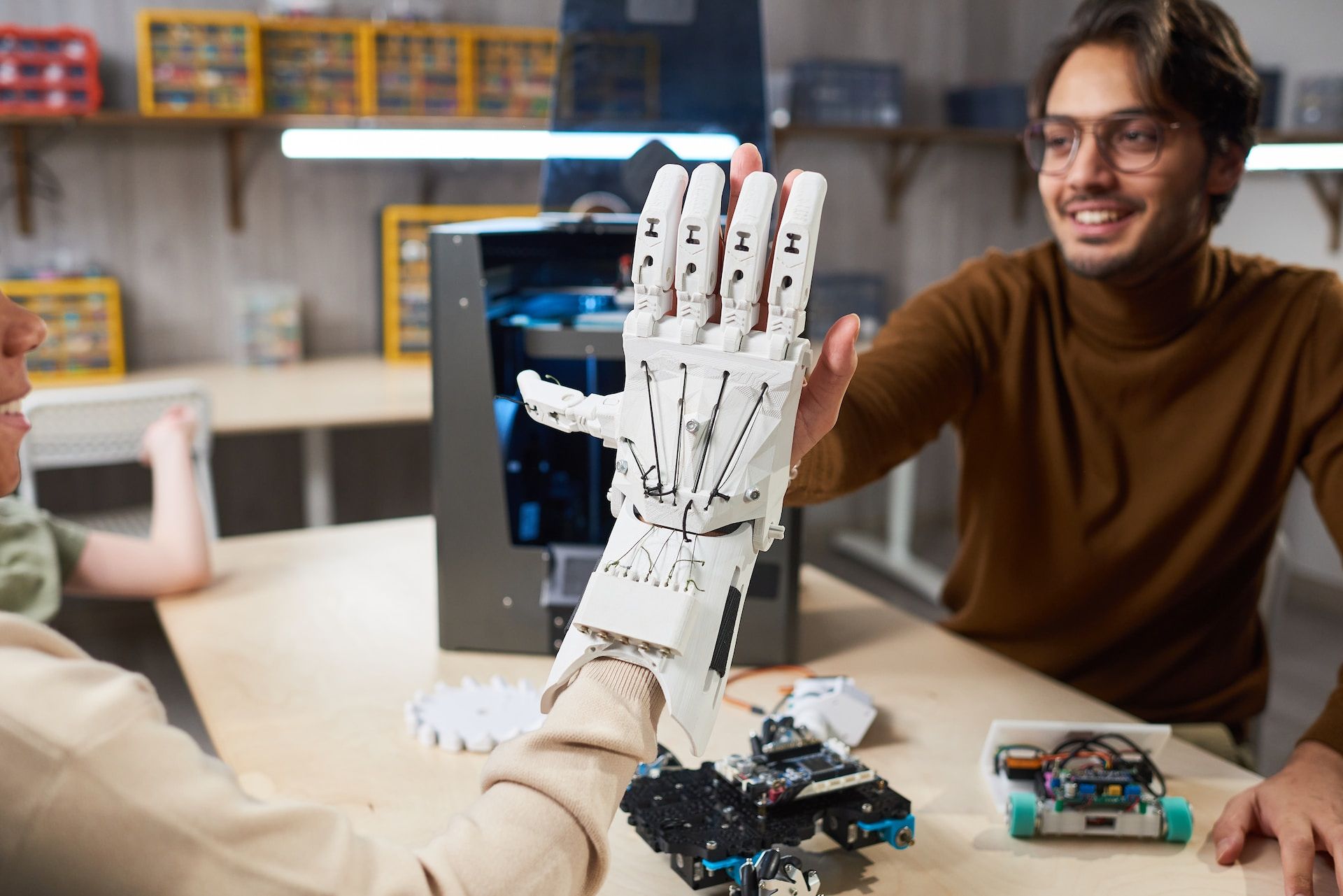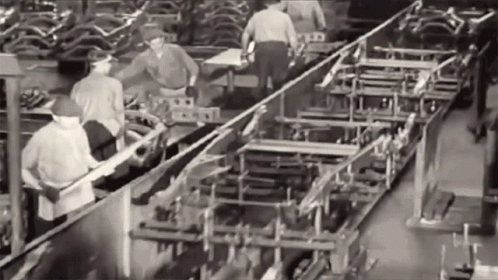Debunking the Myth: Will Robots Destroy Future Work or Improve It?
Don't let change scare you.

In recent years, there has been a growing concern regarding the impact of robotics and automation on future jobs. Many fear that the continuous advancement in these fields will lead to a dystopian future where machines replace humans, leading to widespread unemployment.
However, if we take a step back and consider the past, we realize this is not the first time we've faced such challenges. Throughout history, we've seen many such shifts, and in most cases, these changes have led to work and living standards improvements. Here's why we should remain optimistic about the future.
How Work Changed in the Past
A glance at history shows that our work and economy have always been in flux due to technological advancements. For instance, the transition from agricultural societies to the industrial age fundamentally changed the nature of work. And while these transitions were not always smooth, they generally resulted in substantial societal benefits.
The Groundwork for Streamlining Work in the 16th Century
As early as the 16th century, a shift began from manual labor and craftsmanship towards more systematic and streamlined production methods. This period, known as the age of proto-industrialization, saw the rise of cottage industries where families began to specialize in a particular trade and sell their products or services to a larger market.
With the advent of technologies such as water and wind power, productivity increased, leading to economic growth and higher living standards. This period laid the groundwork for the more drastic changes that would come with the Industrial Revolution.
Machines and Factories in the 19th and 20th Century
The 19th century marked the start of the Industrial Revolution. In this era, innovations such as steam power and mechanized textile production led to the creation of factories. As a result, productivity skyrocketed, and wages and living standards improved significantly.

By the 20th century, further technological advancements, such as electrification and assembly lines, made factories even more efficient. As industries grew, so did the demand for workers with different skills. This led to an increase in jobs and opportunities, driving significant economic growth and human progress.
The transition to factory work was challenging. Many people were initially displaced from their jobs, leading to social and economic disruption. However, new industries and jobs eventually emerged, absorbing the workforce and creating new opportunities.
So, while there was a temporary dislocation, the net effect of these technological advances was positive. They led to better quality of life, higher wages, increased leisure time, and new avenues for human creativity and innovation.
In the next section, we'll explore how similar dynamics could play out in the era of robotics and automation.
How Robots Are Used Today
Even though the advent of robotics may seem like a future concern, it is already an integral part of many industries. From agriculture to healthcare, robots have been assisting us in achieving more significant results with fewer resources.
Not only do they boost efficiency and productivity, but they also help address global challenges such as climate change and an increasing population. Far from the fear that robots will replace humans in the workspace, they often serve as valuable partners augmenting human capabilities.
Robotics in Agriculture
In agriculture, robots are already making a significant impact. They are used in various tasks, from planting and harvesting to sorting and packaging. Precision farming robots, for instance, can plant seeds, apply fertilizer, and even harvest crops with incredible accuracy, thereby optimizing yield and reducing wastage.
Robotic milking systems have automated the process of milking cows, providing significant labor savings, and increasing productivity. The advent of agricultural drones is transforming farming by monitoring crop health and optimizing irrigation.
In the face of climate change and the pressure to produce more food for a growing population, such technology is more crucial than ever. Robots help increase productivity and promote sustainable farming practices that minimize environmental impact.
Robotics in Healthcare
The healthcare industry is another area where robots are playing a crucial role. Surgical robots, for example, assist surgeons in performing complex procedures with greater precision and fewer complications. They allow for minimally invasive surgery, leading to quicker patient recovery times.
Robotic aids are also transforming patient care. From helping the elderly maintain their independence at home to assisting those with mobility challenges, robots have brought about a paradigm shift in caregiving.
In the wake of the COVID-19 pandemic, robots have played a pivotal role in disinfection, delivering medicines, and reducing the exposure risk for healthcare workers.
Robots as Partners, Not Replacements
Contrary to popular belief, robots are not primarily used to replace humans but to augment their capabilities. The goal is to automate repetitive, tedious, or dangerous tasks, freeing up humans for more complex, creative, and meaningful work.
For instance, collaborative robots or "cobots" are designed to work alongside human workers, sharing tasks and enhancing productivity. They help reduce worker fatigue, improve safety, and allow for more flexible production processes.
In conclusion, rather than viewing robots as a threat to human jobs, seeing them as tools that can enhance our productivity, address global challenges, and improve our quality of life would be more constructive. With proper regulatory frameworks and strategic planning, the future of work with robots can be one of mutual growth and prosperity.
3 Ways Robots Will Make the Future of Work Better
With the relentless march of technological innovation, the debate over robots and their impact on future work continues.
However, there's a positive outlook that robots will not merely replace existing jobs but will transform, create, and elevate our work to new heights. Here are three compelling ways robots will enhance the future of work.
Transformation of Jobs into New Roles
Contrary to job elimination, robots will largely transform existing roles. As a Harvard Business Review study noted, automation tends to reshape jobs rather than eliminate them. It's about evolution, not extinction. Robots will take over the repetitive, tedious parts of jobs, allowing humans to focus on the more complex aspects that require critical thinking, decision-making, and creativity.
For instance, a factory worker whose job was once focused on repetitive assembly line tasks may evolve into a robot technician, managing, maintaining, and troubleshooting automated systems. This transformation increases the value and complexity of their work, leading to enhanced job satisfaction and higher pay.
Higher Paying Jobs in Manufacturing and Beyond
As robots become more integral in industries such as manufacturing, they will pave the way for higher-paying jobs. The reason for this is simple: automation allows for increased productivity and efficiency, and employees who can manage and oversee these automated processes will be in high demand.
Workers skilled in robotics, automation, AI, and related fields will find numerous opportunities in auto manufacturing and beyond. As machines take over manual labor, humans will shift in the job market towards roles that require oversight of these machines. Employees who adapt to this change and acquire the necessary skills will be in a favorable position.
Enable More People to Pursue Creative Careers
The rise of robotics will also have an unexpected yet positive ripple effect on the creative economy. As robots take on more manual and routine tasks, they will free up time and resources for humans to engage in more creative pursuits.

Artists, writers, musicians, designers, and others in creative professions will have more opportunities to make a living from their work. Meanwhile, those in traditionally non-creative roles may find more time and energy to explore their creative side, contributing to a more vibrant and diverse cultural landscape.
Moreover, the automation of manual jobs will also create opportunities for more people to discover their passion and pursue a career they love. As robots take care of mundane tasks, individuals can explore a broader spectrum of careers, potentially leading to a more fulfilled and satisfied workforce.
In conclusion, the narrative of robots destroying jobs needs to be completed. The full story is that automation will transform existing jobs into new roles, lead to higher-paying positions, and empower more individuals to embrace their creativity. The future of work, facilitated by robotics and automation, promises evolution, opportunity, and prosperity.
How to Future-Proof Your Career
In an era defined by the rise of robotics and artificial intelligence, future-proofing your career is vital. It's about adopting a mindset of continuous learning and adaptation. Here are some strategies to ensure your career remains robust and relevant in the face of transformative technologies.

Stay Abreast of Developments in Automation, AI, and Robotics
The world of technology is evolving at breakneck speed. Consequently, staying informed about the latest automation, AI, and robotics developments is essential. Subscribe to tech news sites, join online forums, attend relevant webinars and workshops, and network with professionals in the tech field.
The more informed you are, the better you can anticipate and adapt to changes impacting your career.
Cultivate Skills That Can’t Be Replaced
In the landscape of automation, soft skills will be your superpower. Abilities such as public speaking, creative problem-solving, empathy, and leadership are uniquely human traits that machines can't emulate.
For instance, public speaking requires empathy and audience understanding that robots can't replicate. Creative problem-solving involves a degree of intuition and innovation that machines need to improve. Building a solid professional network involves emotional intelligence, where humans excel, and machines fall short. Cultivating these skills will give you a competitive edge in the future job market.
Moreover, these are skills that can be developed and improved over time. For instance, you can learn to speak professionally by taking courses, joining public speaking clubs, or hiring a coach. Developing these irreplaceable skills will significantly boost your employability in the era of automation.
Embrace Career Mobility
The notion of staying in one job for life is becoming increasingly obsolete. In the fast-paced, ever-evolving world of work, being open to change is essential. Don't hesitate to switch jobs or industries to seize opportunities and learn new skills.
Changing jobs can often expand your skillset, expose you to different industries and roles, and help you build a diverse professional network. This adaptability can make you more attractive to future employers and more resilient to changes in the job market.
In conclusion, future-proofing your career in the automation and AI age is about adaptability, lifelong learning, and developing uniquely human skills. By staying informed about tech trends, cultivating irreplaceable skills, and embracing career mobility, you can confidently and succeed in the evolving world of work.

